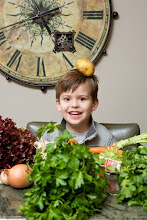
Soda has always been an Achilles heel of mine. As a child, I could hardly resist the full flavored spiciness of a Coca Cola. As I grew older and became weight-conscious, I learned to like Diet Coke. Even as my diet became more and more local, I still couldn't kick the Diet Coke habit. And then there was the resulting waste. I was no fan of the 2 liter bottles, only virgin aluminum cans kept the fizz adequately. For these reasons, I'm happy to report that I'm Diet Coke free for two months now.
Back in May, I ran into the
Soda Stream folks at Green Fest. I picked up a coupon, while my assistant bought the floor model. After hearing him rave about it for months, I broke down and bought one.
Soda Stream makes a variety of soda makers and mixes. It uses a single carbonator, which makes about 110 1 liter bottles. The Fountain Jet, the Genesis and the Pure use BPA-free plastic bottles, while the more expensive Penguin uses glass carafes.
Soda Stream makes a number of mixes to add to the soda water. The diet cola is a pretty good substitute to my ordinary poison. The sodas on my machine are stored in the plastic bottle used to make the soda water, so like other plastic bottles, the fizz lessons, but it’s a small sacrifice for lessening my aluminum habit. Plus, there’s a stainless steel container, which hopefully will do the trick.
My only disappointment was the full-cal flavors. The regular flavors are sweetened with a mixture of sugar and Splenda, which while reduces calories, provides that artificial flavor. Yes, yes, I know if I drink Diet Coke, aren’t I used to it? Indeed. However, when giving my son a special treat of homemade soda, I would prefer that it doesn’t include artificial sweeteners.
And then it dawned on me, I don’t need no stinkin’ mixes. With all the beautiful fruits that are coming to the farmers' market these days, all I need is fruit puree, organic sugar syrup and a bit of imagination.
The following are recipes for some of the concoctions I've made thus far.
Sparkling Raspberry Lime-Aid
Serves 1
You can also make Minted Sparkling Raspberry Lemon-Aid by substituting 1 tablespoon lemon juice for the lime juice and uses minted sugar syrup instead of plain.
1 tablespoon raspberry puree made by pushing the raspberries through a fine mesh strainer
Juice of ½ lime
2 teaspoons sugar syrup (recipe to follow) or to taste
soda water to cover
ice
Mix the ingredients and enjoy in a tall glass
Sugar Syrup
Makes approximately 2 cups
1 cup organic sugar
1 cup water
Combine the sugar and water in a small saucepan. Cook over medium heat until the sugar has dissolved. Cool.
Variation: Add ½ cup roughly chopped mint to the sugar and water. Strain when the sugar has dissolved.
Blueberry Lemon Soda
2 cups fresh or frozen blueberries
1-inch piece of lemon zest
1/4 cup organic sugar
lemon juice
soda water to cover
ice
Cook the blueberries with the lemon, sugar and water to cover by 1/2 inch until the blueberries have softened. Puree in a food processor and push through a fine mesh strainer. Cool. Once cooled, mix 1/4 cup of blueberry syrup with 1 teaspoon lemon juice with ice and sparkling water to cover.

















